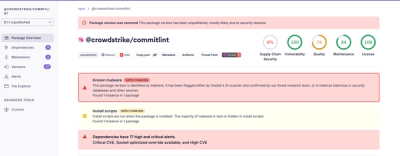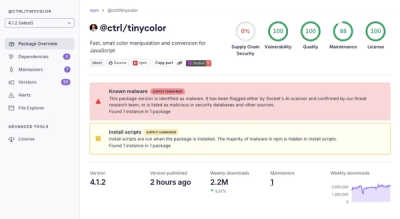html-select
match a tokenized html stream with css selectors

example
var select = require('html-select');
var tokenize = require('html-tokenize');
var fs = require('fs');
fs.createReadStream(__dirname + '/page.html')
.pipe(tokenize())
.pipe(select('.content span', function (e) {
console.log('matched:', e);
}))
;
with this html input:
<html>
<body>
<h1>whoa</h1>
<div class="content">
<span class="greeting">beep boop</span>
<span class="name">robot</div>
</div>
</body>
</html>
produces this output:
matched: { name: 'span', attributes: { class: 'greeting' } }
matched: { name: 'span', attributes: { class: 'name' } }
methods
var select = require('html-select')
var w = select(selector, cb)
Return a writable stream w that expects an object stream of
html-tokenize records as input.
cb(tag) fires on the same tick for each tag matching the css selector
selector. tag looks like:
{ name: 'input', attributes: { type: 'text', 'name': 'user', value: 'beep' } }
The records are of the form:
$ echo -e '<html><body><h1>beep boop</h1></body></html>' | html-tokenize
["open","<html>"]
["open","<body>"]
["open","<h1>"]
["text","beep boop"]
["close","</h1>"]
["close","</body>"]
["close","</html>"]
["text","\n"]
except the second item in each record will be a Buffer if you get the results
from html-tokenize directly.
tag.createReadStream(opts)
Additionally to tag.name and tag.attributes, you can create a readable
stream with all the contents nested under tag.
When opts.outer is true, the outerHTML content of the currently selected tag
is included. For example, taking the selector and opts from process.argv:
var select = require('html-select');
var tokenize = require('html-tokenize');
var fs = require('fs');
var minimist = require('minimist');
var argv = minimist(process.argv.slice(2), { boolean: [ 'outer' ] });
var selector = argv._.join(' ');
process.stdin.pipe(tokenize())
.pipe(select(selector, function (e) {
e.createReadStream(argv).pipe(process.stdout);
}))
;
Running this program normally gives:
$ node read.js .content < page.html
<span class="greeting">beep boop</span>
<span class="name">robot</div>
but running the program with opts.outer as true produces:
$ node read.js .content --outer < page.html
<div class="content">
<span class="greeting">beep boop</span>
<span class="name">robot</div>
</div>
usage
usage: html-select SELECTOR
Given a newline-separated json stream of html tokenize output on stdin,
print matching tags as newline-separated json on stdout.
todo
install
With npm do:
npm install html-select
to get the library or
npm install -g html-select
to get the command-line program.
license
MIT




